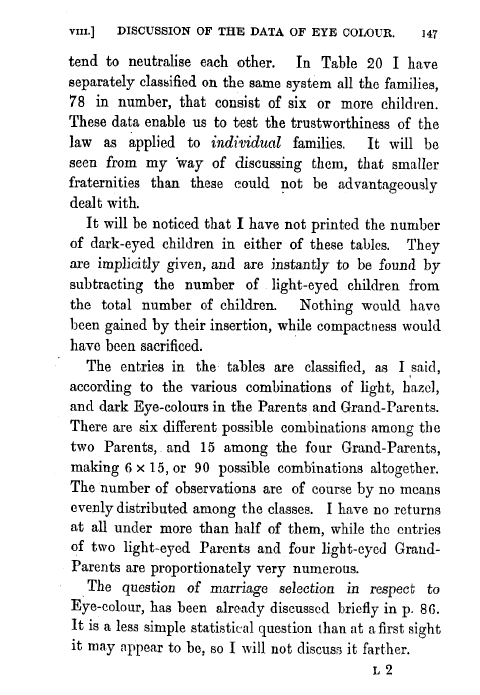viii.] DISCUSSION OF THE DATA OF EYE COLOUR. 147
tend to neutralise each other. In Table 20 I have separately classified on the same system all the families, 78 in number, that consist of six or more children. These data enable us to test the trustworthiness of the law as applied to individual families. It will be seen from my way of discussing them, that smaller fraternities than these could not be advantageously dealt with.
It will be noticed that I have not printed the number of dark-eyed children in either of these tables. They are implicitly given, and are instantly to be found by subtracting the number of light-eyed children from the total number of children. Nothing would have been gained by their insertion, while compactness would have been sacrificed.
The entries in the tables are classified, as I said, according to the various combinations of light, hazel, and dark Eye-colours in the Parents and Grand-Parents. There are six different possible combinations among the two Parents,. and 15 among the four Grand-Parents, making 6 x 15, or 90 possible combinations altogether. The number of observations are of course by no means evenly distributed among the classes. I have no returns at all under more than half of them, while the entries of two light-eyed Parents and four light-eyed GrandParents are proportionately very numerous.
The question of marriage selection in respect to Eye-colour, has been already discussed briefly in p. 86. It is a less simple statistical question than at a first sight it may appear to be, so I will not discuss it farther.
L2

